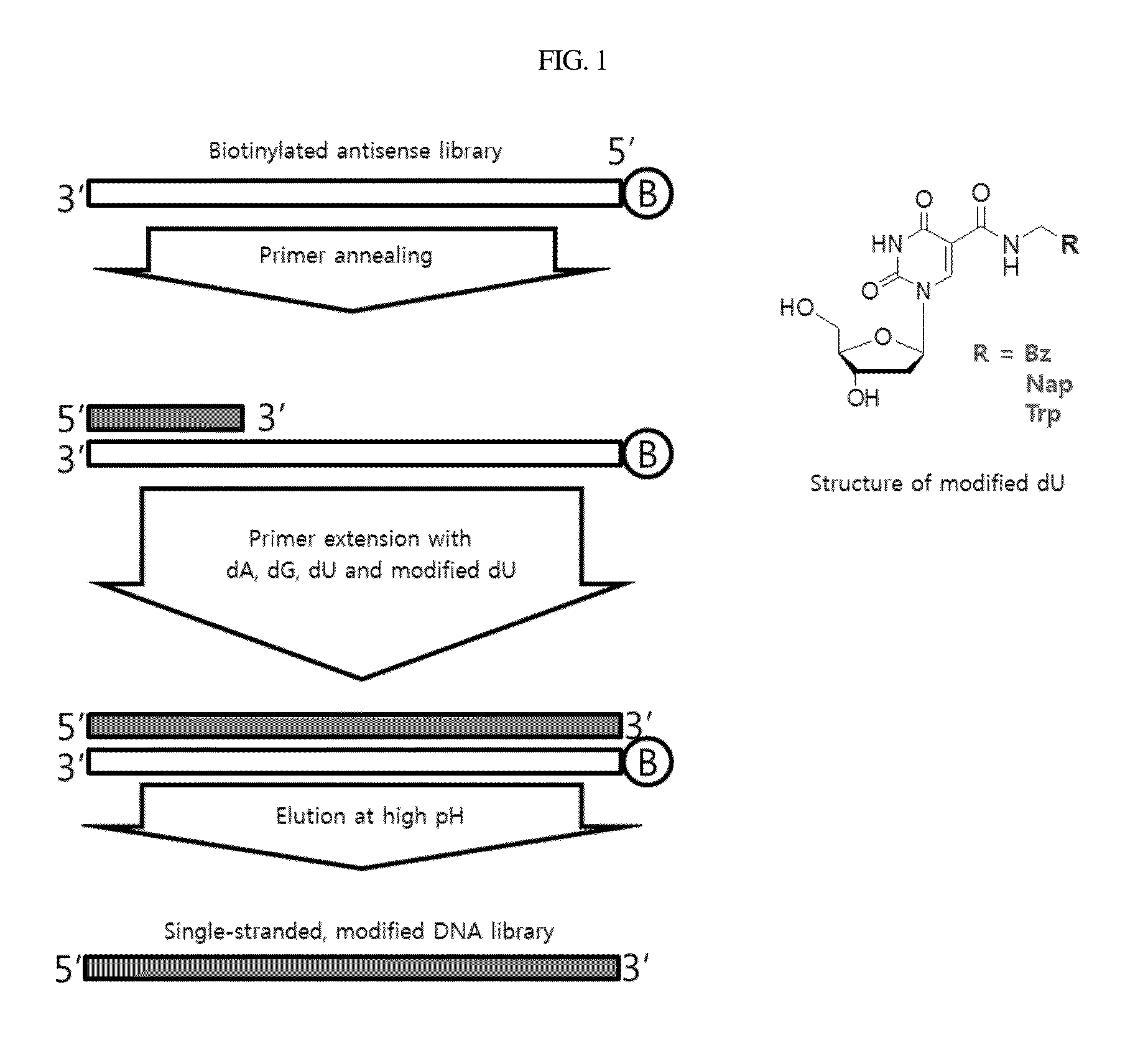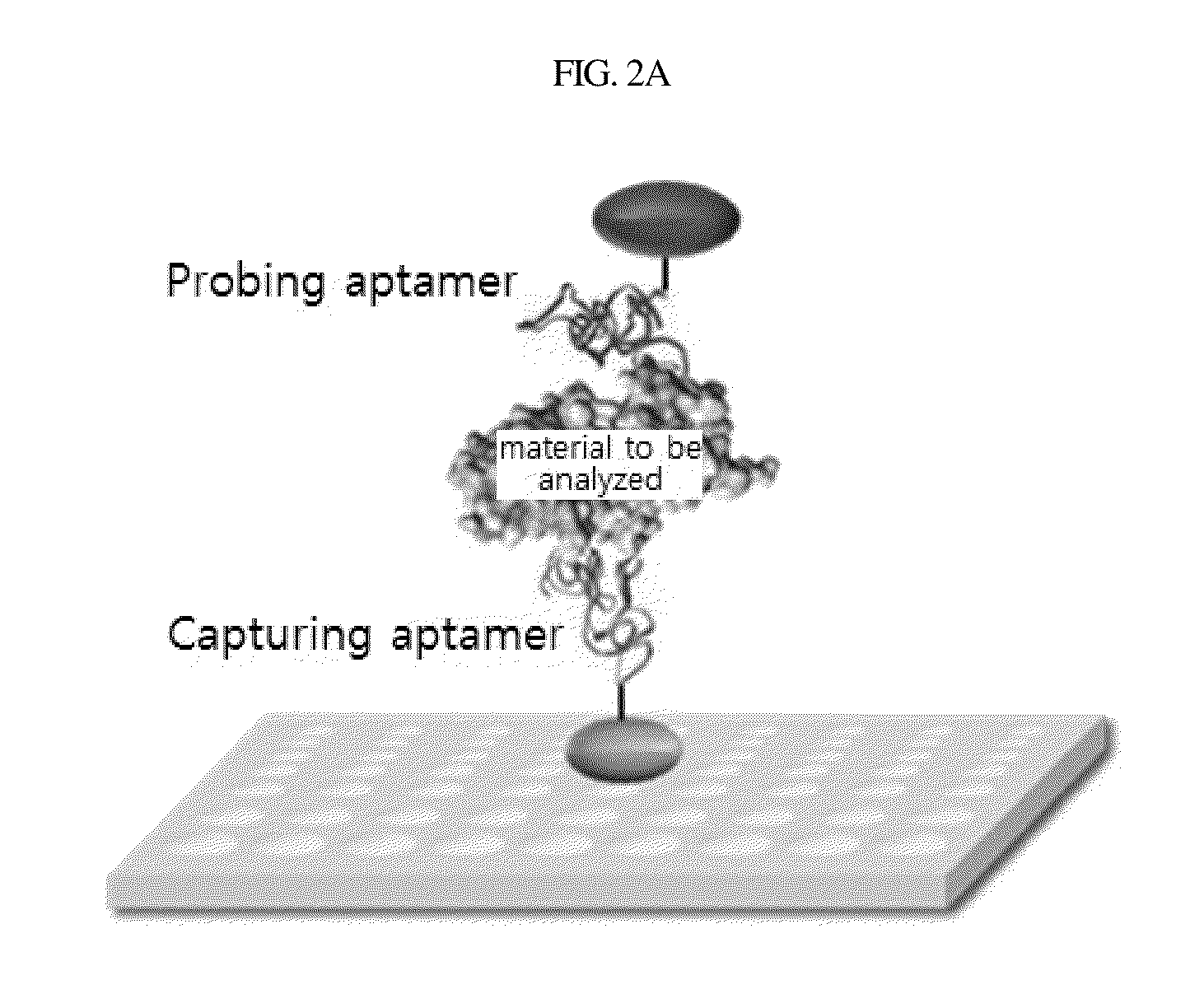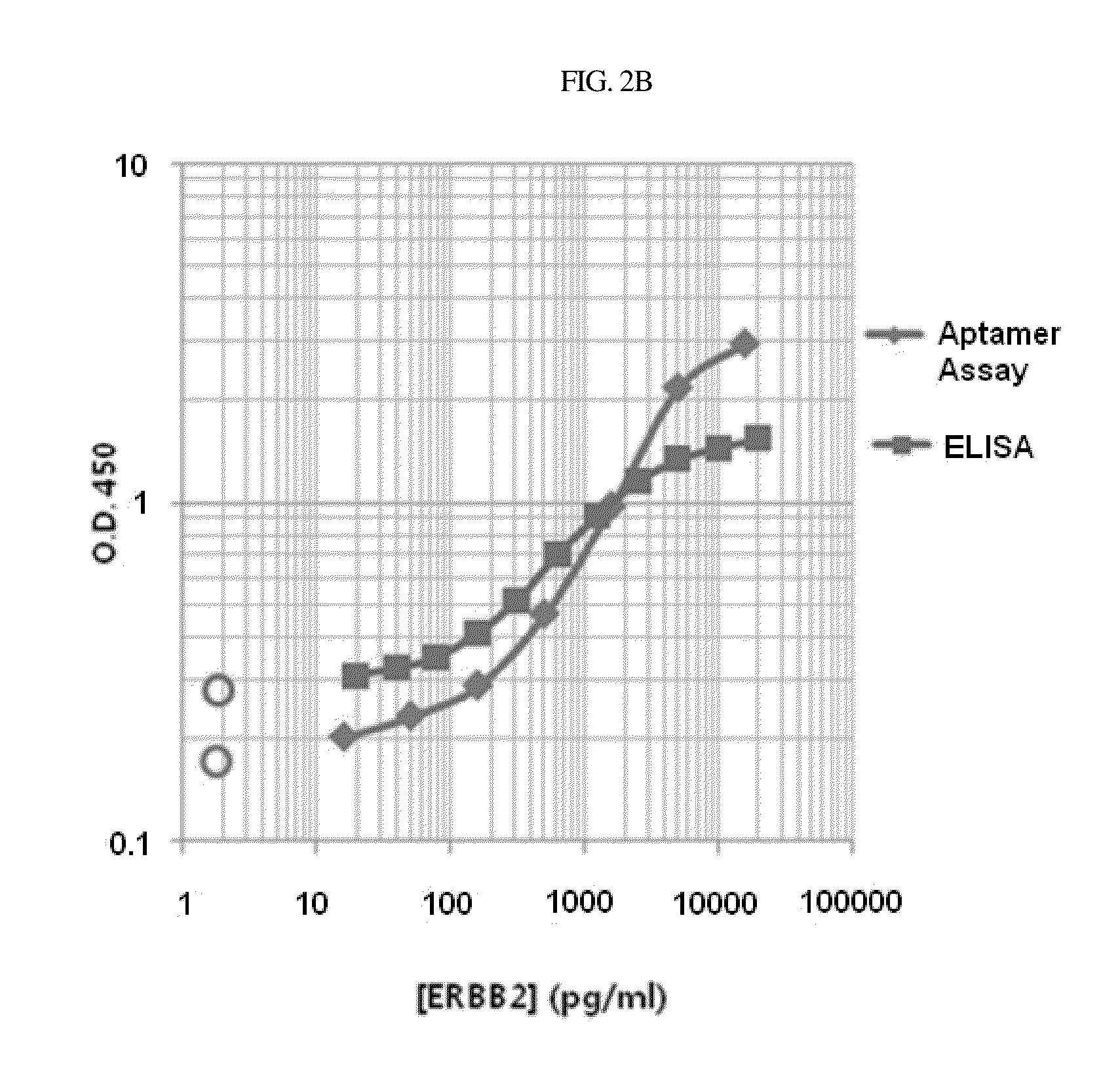Aptamer which selectively binds to ERBB2 receptor and uses thereof
a technology of erbb2 receptor and selective binding, applied in the field of aptamer, can solve the problems of cardiac toxicity, large economic burden on the patient,
- Summary
- Abstract
- Description
- Claims
- Application Information
AI Technical Summary
Benefits of technology
Problems solved by technology
Method used
Image
Examples
example 1
Excavation of ERBB2 Aptamer
[0067]1.1: Construction of Modified Nucleic Acid Library
[0068]For use in constructing a single-stranded modified DNA library necessary for SELEX, an antisense library biotinylated at 5′ terminus [5′-Biotin-d (GGCTGGTGGTGTGGCTG-N40-CAGGCAGACGGTCACTC)-3; (SEQ ID NO: 36)] was synthesized. The procedure was conducted as illustrated in the scheme of FIG. 1.
[0069]The antisense library was incubated with 0.5 mM dNTP (ATP, GTP, CTP, NapdUTP) I the presence of 20 μM 5′ primer (GAGTGACCGTCTGCCTG; SEQ ID NO: 39) in 10× extension buffer (1.2M Tris-HCl pH7.8, 100 mM KCl, 60 mM (NH4)2SO4, 70 mM MgSO4, 1% Triton X-100, 1 mg / ml BSA) containing 0.25 U / ul KOD XL (KOD XL DNA polymerase, Novagen) at 70° C. for 1 hr to give double strand DNA.
[0070]After eluting with 20 mM NaOH, the eluate was neutralized with 80 mM HCl to afford a single-strand modified DNA library. This DNA library was concentrated using Amicon ultra-15 (Millipore) and quantitatively analyzed by UV spectropho...
example 2
Assay for In Vitro Efficacy of ERBB2 Aptamers
[0113]2.1: Screening of Excavated Aptamers for Blocking ERBB2 Signaling
[0114]The EGFR family is composed of four isotypes (EGFR1, ERBB2, ERBB3, and ERBB4). ERBB2, unlike the general structure of the other three isotypes, lacks an extracellular domain responsible for binding with a ligand, such as EGF, NRG, and TGF-alpha, and thus may be in an activated state constitutively. When bound by EGF in normal cells, EGFR1 undergoes a structural change, which may lead to pairing with ERBB2 to create an activated heterodimer which, in turn, stimulates the intrinsic tyrosine kinase activity, thus triggering the intracellular signaling pathway. However, the clustering of EGFRs is different in specific cancer cells, such as breast cancer cells, colorectal cancer cells, etc. When stimulated in such cancer cells, ERBB2 receptors, which are ligand-less receptors in a constitutively activated state, form a homodimer, but not by way of other receptors such...
example 3
Preparation of ERBB2 Aptamer Agents
[0135]From Truncated aptamer AP001-24 (SEQ ID NO: 11), four different ERBB2 aptamer formulations were synthesized, as follows.
[0136]E1: (2′-OMeU)2-ERBB2 aptamer-(2′-OMeU)2(2′-OMeU)2-Cy3-O-(AP001-24)-O-(2′-OMeU)2-T]
[0137]E2: PEG-ERBB2 aptamer-idT [Cy3-T-PEG784-O-(AP001-24)-idT]
[0138]E3: ERBB2 aptamer-idT [Cy3-O-(AP001-24)-idT]
[0139]E4: ERBB2 aptamer [Cy3-O-(AP001-24)-OH]
[0140](T: 2′-deoxyThymidine (Thymidine), idT: inverted deoxythymidine)
[0141](Molecular weight of PEG: 784 Da)
[0142]After purification, the aptamer agents were dissolved in secondary distilled water to give 0.1 mM aptamer solutions.
[0143]The ERBB2-aptamer agents were examined for stability in blood by measuring their serum half lives. Briefly, the aptamer agents were left at 94° C. for 4 min, and slowly cooled to room temperature over 1 hr so as to form their exact secondary structures. Forty μL (4 nmoles) of each of the aptamer solutions was vigorously mixed with 200 μL of human seru...
PUM
| Property | Measurement | Unit |
|---|---|---|
| Mw | aaaaa | aaaaa |
| volume | aaaaa | aaaaa |
| volume | aaaaa | aaaaa |
Abstract
Description
Claims
Application Information
 Login to View More
Login to View More - R&D
- Intellectual Property
- Life Sciences
- Materials
- Tech Scout
- Unparalleled Data Quality
- Higher Quality Content
- 60% Fewer Hallucinations
Browse by: Latest US Patents, China's latest patents, Technical Efficacy Thesaurus, Application Domain, Technology Topic, Popular Technical Reports.
© 2025 PatSnap. All rights reserved.Legal|Privacy policy|Modern Slavery Act Transparency Statement|Sitemap|About US| Contact US: help@patsnap.com



